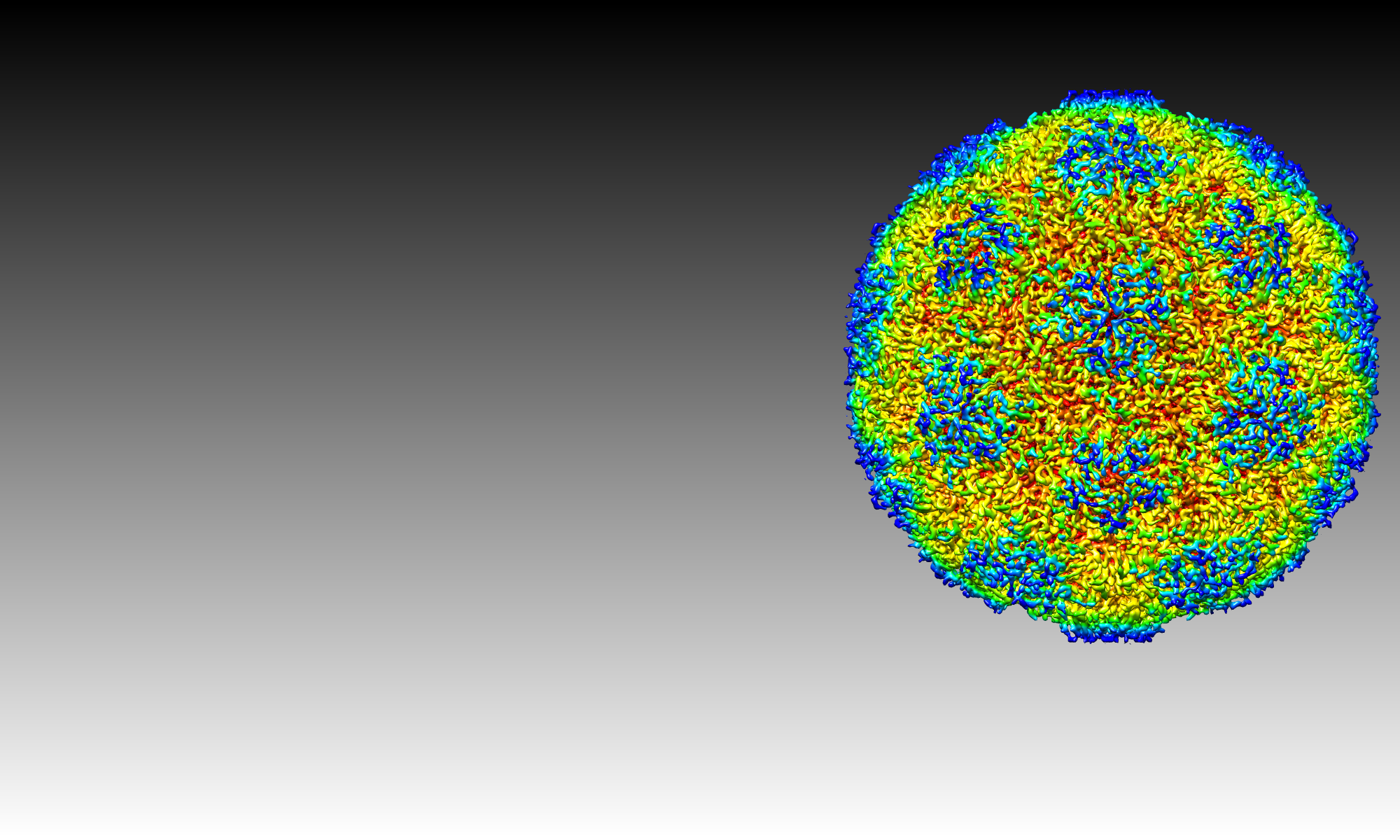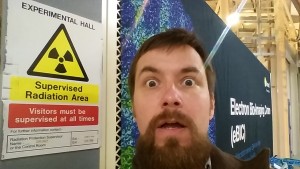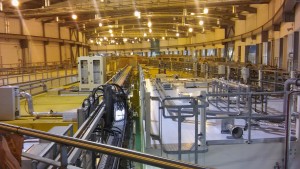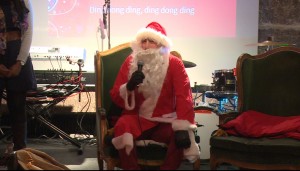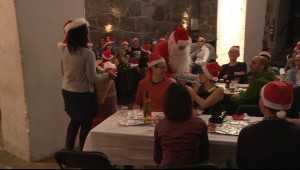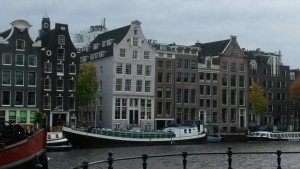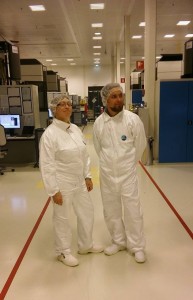Resolving the high-resolution structure of a parechovirus by Prof Butcher’s group at the University of Helsinki helps the development of antiviral drugs.
Human parechovirus type 3 is a picornavirus that can cause severe infections in humans, resulting in sepsis and central nervous system disease in newborns. So far the most promising anti-picornaviral drug candidates do not have any effect on the parechovirus, therefore new effective means have to be found.
Researchers in the University of Helsinki have determined a high-resolution structure of the human parechovirus type 3. The three-dimensional model was created by collecting thousands of images of virus with an electron microscope under -190 °C. The images were then computationally aligned and combined.
“The virus genome is a single-stranded RNA, which is encapsidated in a protein shell. About a quarter of the genome is in close contact with the capsid proteins, leading to highly ordered RNA. This has not been seen in other picornaviruses,” describes Postdoctoral Researcher, Dr Shabih Shakeel in the Institute of Biotechnology.
The atomic model of the virus shows a distinct way of how viral proteins interact with each other to stabilize the capsid. The best studied anti-picornaviral drug pleconaril and its derivatives work well against enteroviruses, large group of picornaviruses. The parechovirus type 3 structure demonstrates that pleconaril binding place is blocked in parechoviruses and therefore does not work against this virus group.
Marie Curie Postdoctoral Research Fellow, Dr Ausra Domanska worked on the structure of the same virus in complex with antibody fragments recognising parechovirus type 3.
“In the absence of antiviral drugs, developing broadly neutralising monoclonal antibodies as therapeutic antibodies against this virus is one of the most promising treatment options for clinicians in the near future,” she says.

Human parechovirus type 3 with bound antibody fragments. Picture by Ausra Domanska
_________
Shakeel, S. et al. Multiple capsid-stabilizing interactions revealed in a high-resolution structure of an emerging picornavirus causing neonatal sepsis. Nat. Commun. 7:11387 doi: 10.1038/ncomms11387 (2016) http://www.nature.com/articles/ncomms11387
This study was supported by Academy of Finland, Sigrid Juselius Foundation, People Programme (Marie Curie Actions) of the European Union’s Seventh Framework Programme FP7/2007-2013/ under REA grant agreements no. 612308 and no. 628150. The authors of the study, led by Prof. Sarah Butcher at the Institute of Biotechnology, University of Helsinki, and Dr Wolthers at Academic Medical Center in Amsterdam, are all members of the AIROPico consortium.
AIROPico (Academic Industry R&D Opportunities for Picornaviruses) is the first EU-funded scientific consortium for emerging picornavirus research. Coordinated by Dr Katja Wolthers from the Netherlands, AIROPico brings together researchers from two companies and four academic sites across Europe, and aims to shed new light on how picornaviruses cause disease in humans. The consortium’s objectives include the creation of fast point-of-care diagnostic tools and the development of effective anti-picornaviral treatment.
For more info about the AIROPico project see http://www.airopico.eu/
